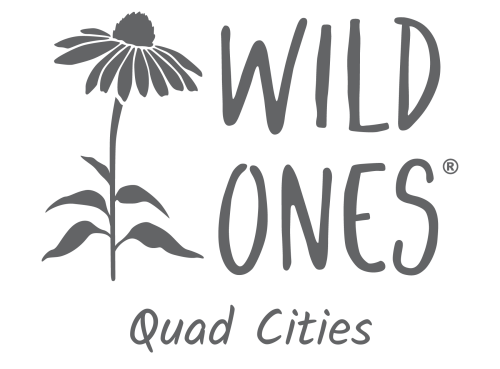by Gina Bartleson
My pollinator garden, located in Iowa City, began 8 years ago this year. It’s a continual work in progress. Each year, we have converted more of our yard to pollinator habitat. Each year, more native plants are added and the ones we already planted creep and expand. Each year, we see more insects, birds, and other animals benefiting from the mini-ecosystem we’ve tried to create.
Mid-summer is a busy time in the urban garden. Yellow coneflower and anise hyssop dominate and the garden is alive with bees, wasps, beetles, butterflies, and hummingbirds. This is the best time of year!
A big hit with me and the bees in my garden is anise hyssop (Agastache foeniculum). A prolific species, the plants bloom from June to even September and are always covered in bumblebees, honeybees and I even saw my first Rusty Patched Bumblebee on one last year! The Japanese Beetles also seem to like the blooms but don’t seem to do too much damage.
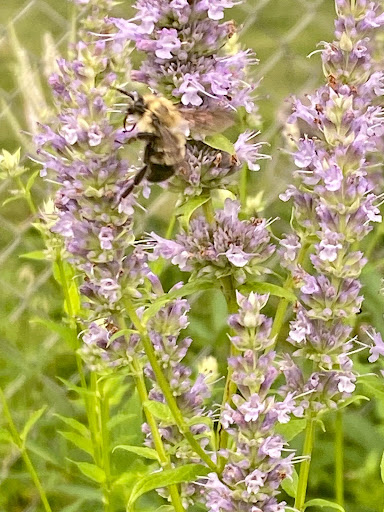
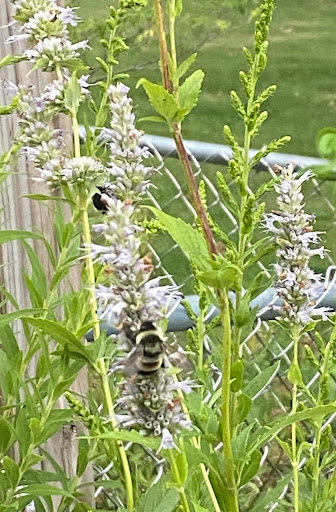
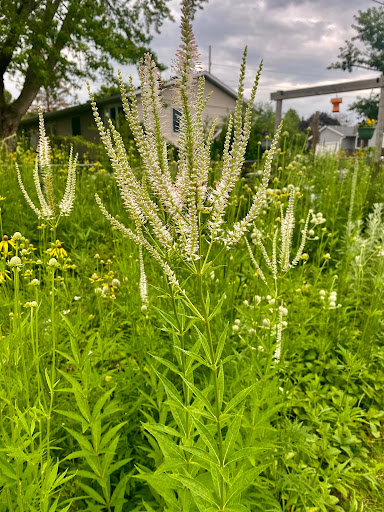
The Culver’s root (Veronicastrum virginicum) is a unique plant with flowery spikes and whorled leaves. Unbothered by urban herbivores and unfussy about soil type, the Culver’s root towers over many of my other native plants, attracting a variety of pollinators, and tends to flop over after flowering. I’m hoping the nearby yellow coneflowers that are happily taking over the garden start propping it up in coming years.
Another distinctive plant, and my husband’s favorite, is rattlesnake master (Eryngium yuccifolium). A member of the carrot family, this plant looks more like a yucca than a carrot. The stiff, long leaves have teeth along the edges and the flowers form spiky spheres. We harvested the seeds last year and this plant was very easy to grow after at least two months of cold, moist stratification. We had so many successful seeds that we ended up giving a lot of them away after planting as many as we could.

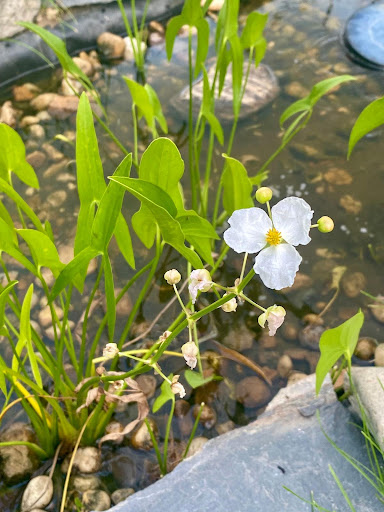
My husband installed a backyard pond last year so now we have a wildlife water source in our yard. We added some native aquatic plants. Unfortunately, young raccoons destroyed our water plants and our solar fountains (our backyard camera caught them in the act!). The only plant that survived was common arrowhead (Sagittaria latifolia). Also called duck-potato, this plant is thriving despite a rough start. It does so well in our shallow pond, we had enough plants this year to separate some and give to a family member for their pond. The white blooms run from mid-summer to early fall and attract a variety of pollinators.
This year’s pickerelweed (Pontederia cordata) is having a much better time than last year’s plant that was ripped to pieces by the young raccoons. The purple flowering stalks attract bumblebees and the seeds are eaten by many duck species though I doubt our small pond will host more than one duck though many other wildlife enjoy the water source. This is the native cousin of the noxious invasive water hyacinth (Eichhornia crassipes).

Planting meadow blazing star (Liatris ligulistylis) brings all the monarch butterflies to the yard! These ethereal blooms are highly coveted by monarchs and as their populations rapidly decrease, seeing four monarchs hanging out in our yard and fighting over these blooms makes me feel so lucky to see them as well as feel so worried about their future. Plant these species along with their milkweed hosts to give the monarchs the food they need for their southern migration. Hopefully if enough of us do this, maybe future generations will enjoy seeing monarchs as much as we do.
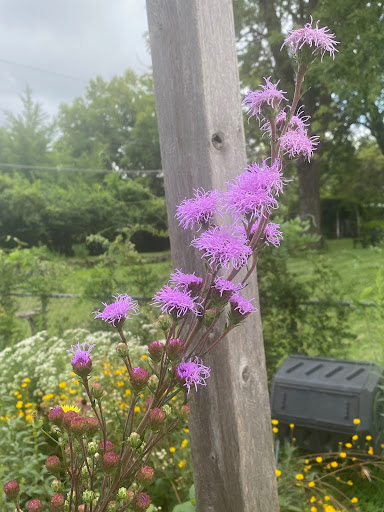
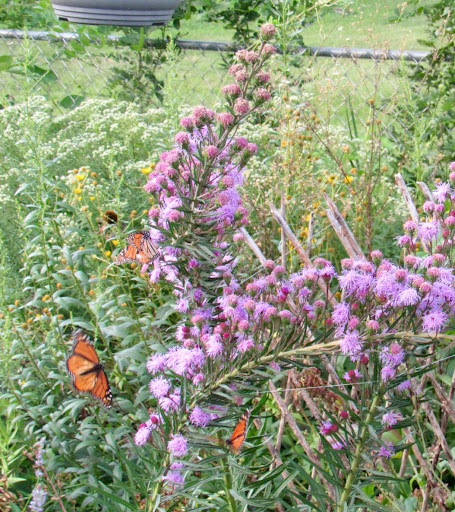
Yellow coneflower (Ratibida pinnata), Virginia mountain mint (Pycnanthemum virginianum), earlysunflower (Heliopsis helianthoides), pale purple coneflower (Echinacea pallida), and the aforementioned anise hyssop come together to present a beautiful summer portrait of purples, yellows and whites in our backyard. Virginia mountain mint, the plant in the background with small white blooms, buzzes with activity, attracting many wasp species including the great golden digger wasp, the great black wasp, potter wasps, and grass-carrying wasps. I used to be petrified of wasps but I’m slowly coming to appreciate the important ecological jobs these wasps conduct.

Thank you for joining me again this month, stay tuned for August!
Thank you so much for your contribution, Gina!
If you would like to submit a blog post, please contact our web chair, Emma Harmon, at [email protected]
